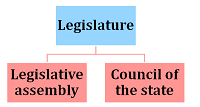

The Government of India Act 1919 was an administrative act that was launched in 1919 to accommodate Indians in the governance of their very own country. This Bill was launched as per the recommendations of the then secretary of state for India, Edwin Montagu, and Lord Chelmsford, India’s victory, (1916-1921).
Some of the notable attributes are mentioned below
Diarchy was brought forth to divide the power between executive councillors and the ministers.
Governor was acknowledged as the executive head of a province
Reserved and transferred lists of subjects were introduced
The ministers were in charge of various subjects like education and excise.
Unlike ministers and the executive councillors were not responsible for the legislature.
This act allowed an enhanced provincial legislative assembly that granted 70% of elected members to be a part of the assembly.
Electorates were allowed based on community and class.
Certain designated women were also allowed to vote.
Governor’s assent was mandated to pass bills.
Governor-General had the ultimate authority as a chief executive.
The administrative list was divided into Central and provincial lists
The provincial list catered to the provinces; the centre handled the central list
The Governor-general issued ordinances.

Figure 1: Legislature
Bicameral legislature was established. The legislative Assembly and Council of the state were later transformed into Lok Sabha and Rajya Sabha respectively.
There were 145 members in the assembly, it had 26 official and 15 non-official members and 104 members were elected that including 52 general, 30 Muslims, 9 Europeans, 4 community representatives and 2 Sikhs.
Members were nominated by the governor-general from Anglo-Indian communities.
The members had 3 years of tenure.
Male members were only selected with 5 years of tenure.
Legislators were allowed to ask questions
25% of the budget was allowed to be voted
Laws were introduced by the passage of bills from both houses
There were 60 members in total, where 27 members were nominated and 17 were official and the rests were not. 33 members were elected out of which 16 were general, 11 members were muslin, 3 Europeans were also included and a Sikh individual was allowed to participate.
A minimum of 8 and a maximum of 12 members were allowed in the council.
Half of the members needed to have served the public service for at least 10 years.
Their tenure was mandated for 5 years.
The salary of these designated individuals ranged from £1000 to £1200
3 Indian members were to be on the council.
This act granted the establishment of the public service commission in India.
A statutory commission was to be set up after 10 years to assess the effectiveness of this format of governance. Resultantly Simon Commission was introduced in 1927.
This act introduced the office of the High commissioner for India in London.
Diarchy distributed the power and a responsible government was established.
The federal structure was introduced by the passage of this act
It enhanced the participation of Indians in administering the country.
The concept of the election was introduced to the people which made them more politically aware.
Some Indian women were also permitted to vote.
This act stretched the communal representation of the Act.
The franchise was constricted and was not allowed to the general public.
The governor general and governors were granted immense power to undermine either of legislature or provinces
Allocation of the seats was done based on the importance of provinces rather than the population.
Even after unanimous opposition from Indian members, those bills were still passed. Resultantly, Indian members resigned.
Bal Gangadhar tilak considered this bill utterly disappointing and unworthy.
Annie Basant also criticised the reform
Certain congress leaders under the leadership of Surendranath Banjerea favoured the proposals laid down by the government
The act uplifted the struggle for power in India and the British.
The formation of the Swaraj party won a vast number of seats in the election.
Bombay and central provinces successfully blocked the majority of ministers’ salaries.
Governors and provinces abolished the diarchal system and took control back.
Nationalists were thoroughly repressed by the passage of this act.
The freedom fighters were kept behind bars
The government empowered itself with more extensive powers to suppress the national movement supporters.
Rowlatt act was opposed by Indian members but was still passed,
The above-mentioned act allowed imprisonment without trial.
This act allowed the government to suspend the right of habeas corpus
Government of India Act was passed to appease Indian citizens. Decisions were stratified and various communal representatives and designated women were also allowed to vote. Despite the favourable decisions being made eventually, blatant repression was carried out by the government turning the effectiveness of this act void. Later on, violent actions were carried out against eminent Indian nationalists and common men alike. This act further fuelled the Independence movement.
Q1. Who was allowed to vote?
People who held certain titles or held offices in local bodies were allowed to voters were also required to pay Rs. 3000 by land revenue. These criteria significantly narrowed down the number of people who could vote.
Q2. What were the powers of the Governor General?
Assent of the governor-general was needed for the passage of bills. The individual could pass the bill without the consent of the legislature. He could negate any question and could prevent any bill from becoming law.
Q3. How were the issues regarding the decision resolved?
The lower and the upper house could engage in a deadlock regarding any decision. This issue could be solved by the formation of a joint committee, conference and sittings.